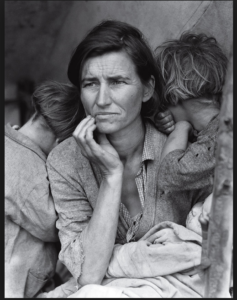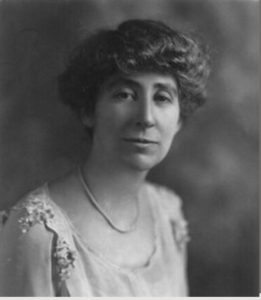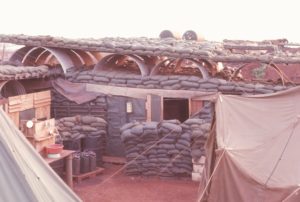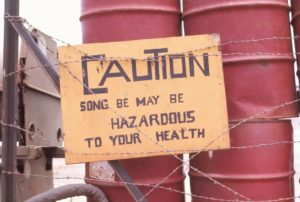Please note: I updated this post in August 2021, so this is outdated. Please see the new post at this link.
If you ever worked in the natural gas pipeline business, you might be familiar with the notion that something needed to be “flanged up.” That originally meant the need to get pieces bolted together to complete a job. Over time, it acquired a more general meaning for those who did not deal with actual steel: the need to improve something in some fashion.
The Rankin DNA project needs to be “flanged up” a bit. The project began in 2006 with just two YDNA test participants. It has come a long way, and has 176 members as of July 2019. About seventy members are YDNA test participants who are either men named Rankin or whose YDNA establishes them as genetic Rankins.[1] YDNA testing has been helpful to many project members when traditional “paper trails” were inadequate or disputed.
Progress notwithstanding, there are still ancestry, website, and relationship issues to be addressed. There are also a number of test participants who don’t yet have a Rankin match in the project. Obviously, a key need is to get more Rankin YDNA test participants. Please note, this is not a criticism of Rankin project administrators … I AM one. We just need to have more YDNA participants. Easier said than done.
In the meantime, here is a summary of Rankin YDNA results to date. The project has three lineages having four or more YDNA participants in each one. They are (no surprise here) designated Lineages 1, 2, and 3. All three lineages also have sub-lineages – distinct Rankin families that are genetically related, even though a Rankin common ancestor has not been identified. The families in these lineages include some that I have written about on this website. If you have read some Rankin articles, many of these names will be familiar.
On that note, let’s jump in …
Rankin Lineage 1
Lineage 1 (“L1”) has two sub-lineages: Robert and Rebecca Rankin of Guilford Co., North Carolina (L1A) and Joseph Rankin of New Castle County, Delaware (L1B). Robert is definitely the original immigrant in his line; Joseph probably is. No common ancestor for the two lines has been found. YDNA results establish a low probability that there is one on this side of the Atlantic. He probably exists around 1400, plus or minus a century, and almost certainly in Scotland.
Robert and Rebecca Rankin came to the colonies in 1750 from County Donegal, Ireland, according to an autobiography of one of their grandsons.[2] See some articles about their family here, here, and here. There is no known evidence of the origin of Joseph of Delaware.[3] Both Robert and Joseph first appeared in county records in the area around the Philadelphia ports, where most Scots-Irish immigrants landed during the “Great Migration” from Ulster.
Joseph of Delaware arrived in the colonies first, roughly two decades earlier than Robert and Rebecca. He may be the Joseph Rankin who appeared as a “freeman” (unmarried and not a landowner) on a 1729 tax list in London Britain Township in Chester County, Pennsylvania. By 1731, he had acquired a tract on White Clay Creek in New Castle County, Delaware. Joseph had four sons proved by deeds (Joseph Jr., Thomas, William and John), two sons proved by circumstantial evidence (Robert and James), and a daughter Ann proved by a brother’s will. Joseph is buried at Head of Christiana Presbyterian Church in Newark, New Castle County. His 1764 tombstone still exists.
Based on known birth dates, Joseph’s children were born in Delaware. Two of his proved sons – John and William – moved to Guilford County, North Carolina. A descendant of each has YDNA tested and they are a good match.[4] Joseph’s wife was named Rebecca, although there is no known evidence of her maiden name. Nor is there any evidence of Joseph’s family of origin.
Robert and Rebecca’s family first appeared in the records in Chester County, Pennsylvania. Robert and George Rankin (either father/son or brothers) were on the 1753 tax list for West Nottingham Township in Chester. Robert and George received so-called “Nottingham Company” land grants in Guilford (then Rowan) County, North Carolina, near Greensboro. According to a grandson’s autobiography, they migrated to North Carolina in July 1755.
Robert and Rebecca’s children were almost certainly all adults when they arrived in Pennsylvania in 1750. Two sons, Robert and George, are proved. There is good circumstantial evidence in the Rowan and Guilford records for other children, including a son John and daughters Ann Rankin Denny (wife of William Sr.), Margaret Rankin Braly or Brawley (Thomas), and Rebecca Rankin Boyd (John).
David Rankin of Iredell County, North Carolina (died there in 1789) may also be a son of Robert and Rebecca. YDNA results establish that David and Robert were close genetic relatives, although there is apparently no conclusive paper proof of the family connection. David was probably either a son or nephew of Robert and Rebecca. Here is an article about David and Margaret’s son Robert.
Rankin Lineage 2
L2 is the largest group in the project. As of July 2019, there were 22 project participants whose YDNA places them in L2. The family lines represented in the lineage are diverse, although the YDNA results are not. The group members are fairly close matches, suggesting a common ancestor no earlier than 400-500 years ago, probably in Scotland. The immigrant ancestor of many of the L2 members first appeared in Pennsylvania or Virginia during the “Great Migration” of Scots-Irish from Ulster. From there, the L2 Rankins spread west into the Ohio Valley or south and southwest into Virginia, North Carolina and Tennessee.
There are three Rankin lines in L2 which have at least four participants each. There are also a number of L2 participants who are “one of a kind,” meaning that each man’s last known Rankin ancestor is not (so far as is known) shared with another L2 member. Some members of L2 are “one of a kind” simply because they have provided no information about their Rankin family trees to project administrators, although they may well belong in one of the three known L2 families.
The L2 family lines are (1) John Rankin who died in 1749 in Lancaster County, Pennsylvania (Lineage 2A), (2) Samuel and Eleanor (“Ellen”) Alexander Rankin of Lincoln County, North Carolina (Lineage 2B), and (3) two families – both David and Jenette McCormick Rankin of Frederick County, Virginia and William Rankin of Fayette County, Pennsylvania (Lineage 2C). Here is a little bit about each one …
Lineage 2A, John Rankin of Lancaster Co., PA (see articles here and here).
This is the Rankin family memorialized on the famous tablet in the Mt. Horeb Cemetery in Jefferson County, Tennessee – descendants of John Rankin who died in 1749 in Lancaster Co., PA. His wife is traditionally identified as Mary McElwee, although John’s widow was named Margaret. John’s will named Margaret, two sons (Thomas and Richard), six daughters, and two sons-in-law.[5] All of the L2A members are descended from John’s son Thomas. He briefly appeared in the records of Cumberland County, Pennsylvania, moved to Augusta County, Virginia for a time, then migrated to east Tennessee. No member of the Rankin project self-identifies as a descendant of John’s son Richard, who moved from Pennsylvania to Augusta County and died there.
According to family tradition, the John who died in Lancaster in 1749 was a son of William Rankin and grandson of Alexander Rankin of the Scotland “Killing Times” and the 1689 Siege of Londonderry. Apparently, no one has found (or has publicly shared) any proof that John was a son of William, or that William was a son of Alexander. Records in Ireland are limited, however.
There are two project participants who are probable descendants of Adam Rankin of Lancaster County, whose wife was Mary Steele. Family oral traditions for both Adam and John (the common ancestor of the L2A participants) say that Adam and John were brothers. However, Adam’s probable descendants are not a YDNA match with John’s descendants, indicating that John and Adam were not genetically related through the male Rankin line. There are four or five articles about Adam’s line on this website, see, e.g., two articles here and here.
Lineage 2B: Samuel Rankin of Lincoln Co., NC
L2B is the line of Samuel and Eleanor (“Ellen”) Alexander Rankin of Rowan, Tryon, Mecklenburg, and Lincoln Counties, North Carolina. Several misconceptions about Samuel and Eleanor persist online. One myth is that Samuel was a son of Robert and Rebecca Rankin of Guilford County (Lineage 1A). Another is that Samuel was a son of Joseph Rankin of Delaware (Lineage 1B). Both possibilities are disproved by YDNA. Some researchers also claim that Samuel and his wife were married in Pennsylvania, although Eleanor’s parents James and Ann Alexander were in Anson/Rowan County by 1753 at the latest. Samuel and Eleanor were married about 1759, almost certainly in Rowan. There is no evidence of Samuel’s birthplace.
Samuel’s tombstone in the Goshen Presbyterian Cemetery in Belmont, NC no longer exists. A WPA cemetery survey taken in the 1930s transcribed his tombstone inscription to say that he was born in 1734 and died in 1816. His will was dated 1814, but wasn’t probated until 1826. His last appearance in the Lincoln Co., NC records while he was still alive was in July 1816. He left most of his nine surviving children (his son Richard predeceased him) a token bequest, and devised the bulk of his estate to his son James.[6] Samuel and Eleanor’s children either remained in the Lincoln/Mecklenburg/Iredell area or moved to Arkansas, Tennessee, or Illinois. Here are articles about Samuel and Eleanor’s son Richard and their daughter Jean Rankin Hartgrove.
Lineage 2C
Based on descendant charts provided by participants, L2C has two family lines: (1) David Sr. and Jennett McCormick Rankin of Frederick County, Virginia and (2) William Rankin of Fayette County, Pennsylvania. There is no known common Rankin ancestor for the two lines.
David Sr.’s line is represented by three project participants. He left a Frederick County will dated 1757 naming his wife Jennett and children Hugh, William, David Jr. and Barbara.[7] Many online trees identify David Sr.’s wife as “Jennett Mildred,” although all of the Frederick County records identify Jennett without a middle name. Researchers asserting that Jennett had a middle name may have conflated David Sr.’s wife Jennett with an entirely different woman, a Mildred Rankin who was married to one of David Sr.’s grandsons — also named David.
David Jr. married Hannah Province or Provence, probably in Frederick County. They moved from Frederick to Washington County, Pennsylvania and then to Harrison County, Kentucky, where David Jr. died. His brother William and his wife Abigail also moved to Washington County. William died there in 1799. Both David Jr. and William left large families. Some of Hugh’s line probably moved to Kentucky and then to Ohio. Project administrators are looking for descendants of William and/or Hugh who might be willing to YDNA test.
The second family in L2C is the line of William Rankin of Fayette County, Pennsylvania, who died in 1797. His son, William Jr., died in Fayette in 1807. Many from this line stayed in Fayette County for several generations. Some moved “west,” including to Ohio. There is no evidence of William Sr.’s origin prior to the time that he began appearing in Westmoreland and Fayette.
Rankin Lineage 3
The common ancestor of the four L3 participants is David Rankin Sr. who died in Greene County, Tennessee in 1802. His will identified seven children but not his wife, who evidently predeceased him. David Sr. was reportedly among the “Overmountain Men” who left what was then Washington County, Tennessee to fight in the Battle of King’s Mountain in South Carolina. That battle was a major defeat for the British in the Southern Campaign.
There is some disagreement among researchers about the identity of David Sr.’s wife or wives. His wife is usually identified as Margart Kerr, Anne Campbell, both, or neither, without a citation to any evidence. Another question is where David Sr. lived before coming to Greene County in 1783. It is possible that David Sr. of Greene is the same man as the David Rankin who received a 1771 land patent in Bedford County, Virginia, although that man was a Quaker. Other researchers believe that David Sr. was a son of the William Rankin who died in 1792 in Franklin County, Pennsylvania (wife Mary Huston). That possibility has been disproved by YDNA results.
Rankin researchers can take comfort in the fact that Flossie Cloyd, the premier Rankin researcher of the 20thcentury, was baffled by David Sr.’s ancestry. He may well be the immigrant ancestor in his line.
Whew! That’s more than enough for right now …
See you on down the road.
Robin
[1] For example, the Rankin project includes men whose surname at birth was Rankin but were adopted by a stepfather after the Rankin parents divorced.
[2] Jonathan Jeffrey at the Department of Library Special Collections at the University of Western Kentucky sent to me a 22-page transcription of the autobiography of Rev. John Rankin, a grandson of Robert and Rebecca. For the most part, it is a recount of his faith history. It has very little helpful genealogy.
[3] One history says that Joseph came from “Clyde Scotland,” presumably somewhere near the River Clyde. It also claims that Joseph’s children were born in Scotland, which is demonstrably incorrect. See Bill and Martha Reamy, Genealogical Abstracts from Biographical and Genealogical History of the State of Delaware(Westminster, MD: Willow Bend Books, 2001). The Findagrave website claims that he was born in “Ulster Ireland,” which is undoubtedly a good guess but is unsubstantiated.
[4] Only one of Joseph’s proved descendants is a member of the Rankin DNA Project. He has provided information to project administrators about his YDNA match to another proved descendant of Joseph.
[5] Lancaster Co., PA Will Book J: 211.
[6] Lincoln Co., NC Will Book 1: 37. Given the nature of Samuel’s will, there would have been no rush to submit it to probate.
[7] Frederick Co., VA Will Book 3: 443.













